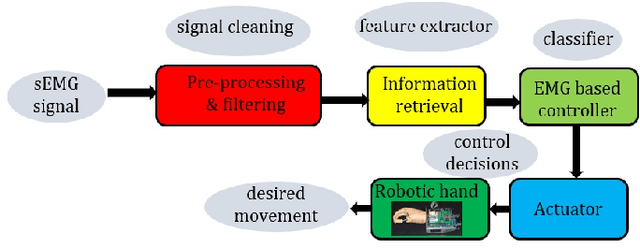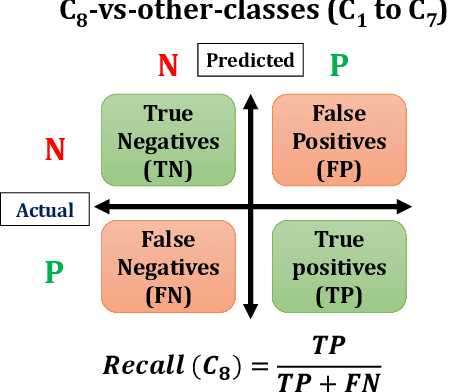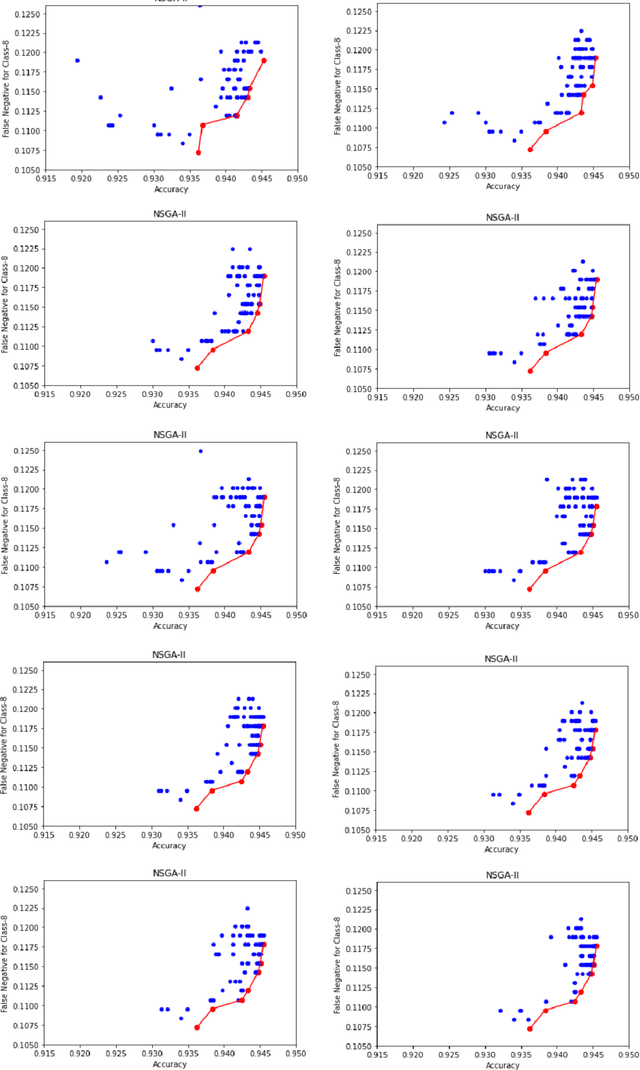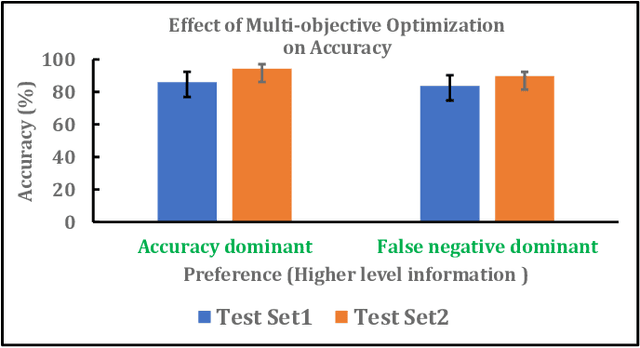Anand Kumar Mukhopadhyay
Towards Power-Efficient Design of Myoelectric Controller based on Evolutionary Computation
Apr 02, 2022



Abstract:Myoelectric pattern recognition is one of the important aspects in the design of the control strategy for various applications including upper-limb prostheses and bio-robotic hand movement systems. The current work has proposed an approach to design an energy-efficient EMG-based controller by considering a supervised learning framework using a kernelized SVM classifier for decoding the information of surface electromyography (sEMG) signals to infer the underlying muscle movements. In order to achieve the optimized performance of the EMG-based controller, our main strategy of classifier design is to reduce the false movements of the overall system (when the EMG-based controller is at the `Rest' position). To this end, unlike the traditional single training objective of soft margin kernelized SVM, we have formulated the training algorithm of the proposed supervised learning system as a general constrained multi-objective optimization problem. An elitist multi-objective evolutionary algorithm $-$ the non-dominated sorting genetic algorithm II (NSGA-II) has been used for the tuning of SVM hyperparameters. We have presented the experimental results by performing the experiments on a dataset consisting of the sEMG signals collected from eleven subjects at five different upper limb positions. It is evident from the presented result that the proposed approach provides much more flexibility to the designer in selecting the parameters of the classifier to optimize the energy efficiency of the EMG-based controller.
Intelligent Wireless Sensor Nodes for Human Footstep Sound Classification for Security Application
Dec 23, 2019



Abstract:Sensor nodes present in a wireless sensor network (WSN) for security surveillance applications should preferably be small, energy-efficient and inexpensive with on-sensor computational abilities. An appropriate data processing scheme in the sensor node can help in reducing the power dissipation of the transceiver through compression of information to be communicated. In this paper, authors have attempted a simulation-based study of human footstep sound classification in natural surroundings using simple time-domain features. We used a spiking neural network (SNN), a computationally low weight classifier, derived from an artificial neural network (ANN), for classification. A classification accuracy greater than 85% is achieved using an SNN, degradation of ~5% as compared to ANN. The SNN scheme, along with the required feature extraction scheme, can be amenable to low power sub-threshold analog implementation. Results show that all analog implementation of the proposed SNN scheme can achieve significant power savings over the digital implementation of the same computing scheme and also over other conventional digital architectures using frequency-domain feature extraction and ANN-based classification.
Power efficient Spiking Neural Network Classifier based on memristive crossbar network for spike sorting application
Feb 25, 2018



Abstract:In this paper authors have presented a power efficient scheme for implementing a spike sorting module. Spike sorting is an important application in the field of neural signal acquisition for implantable biomedical systems whose function is to map the Neural-spikes (N-spikes) correctly to the neurons from which it originates. The accurate classification is a pre-requisite for the succeeding systems needed in Brain-Machine-Interfaces (BMIs) to give better performance. The primary design constraint to be satisfied for the spike sorter module is low power with good accuracy. There lies a trade-off in terms of power consumption between the on-chip and off-chip training of the N-spike features. In the former case care has to be taken to make the computational units power efficient whereas in the later the data rate of wireless transmission should be minimized to reduce the power consumption due to the transceivers. In this work a 2-step shared training scheme involving a K-means sorter and a Spiking Neural Network (SNN) is elaborated for on-chip training and classification. Also, a low power SNN classifier scheme using memristive crossbar type architecture is compared with a fully digital implementation. The advantage of the former classifier is that it is power efficient while providing comparable accuracy as that of the digital implementation due to the robustness of the SNN training algorithm which has a good tolerance for variation in memristance.
 Add to Chrome
Add to Chrome Add to Firefox
Add to Firefox Add to Edge
Add to Edge